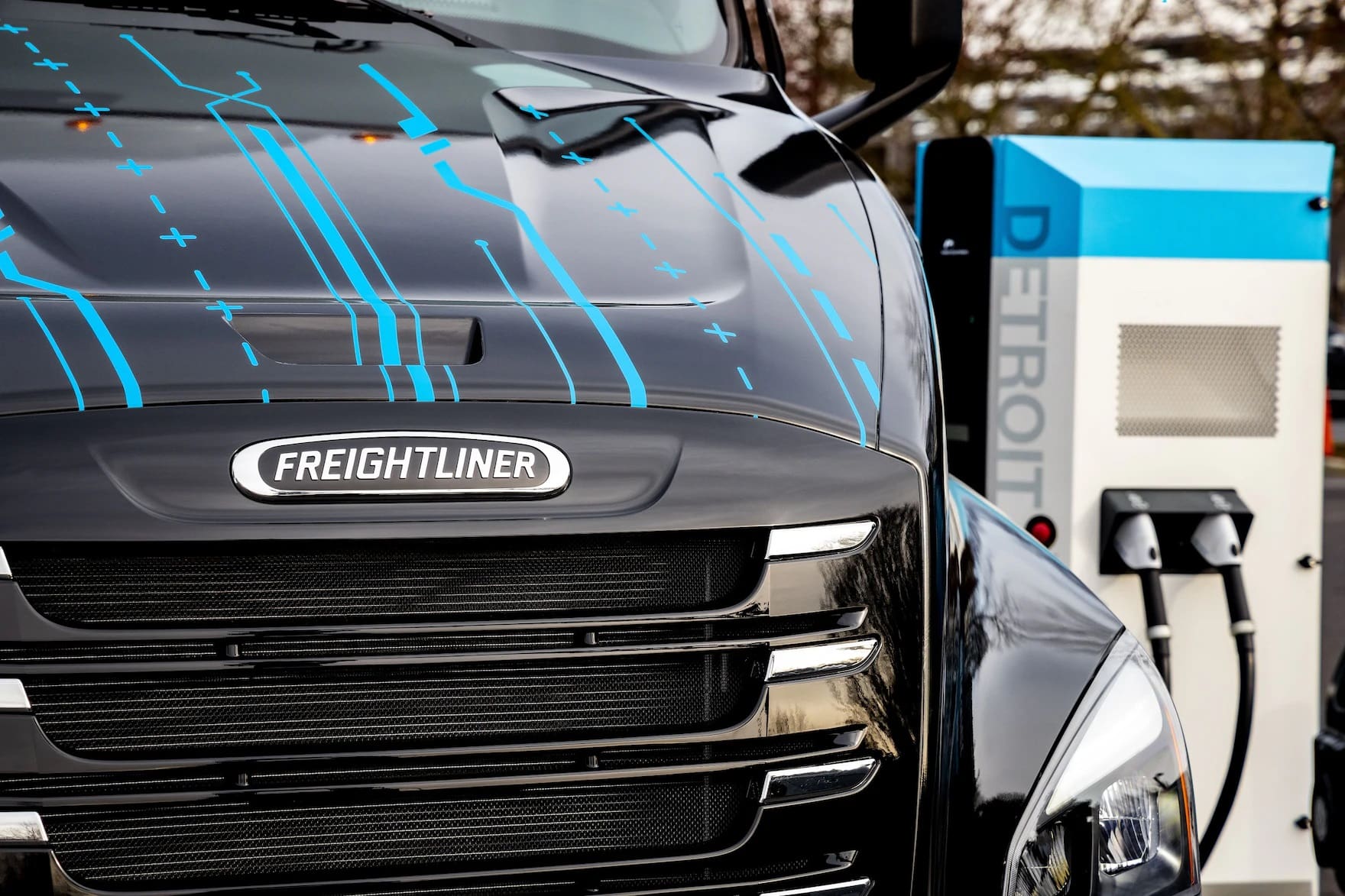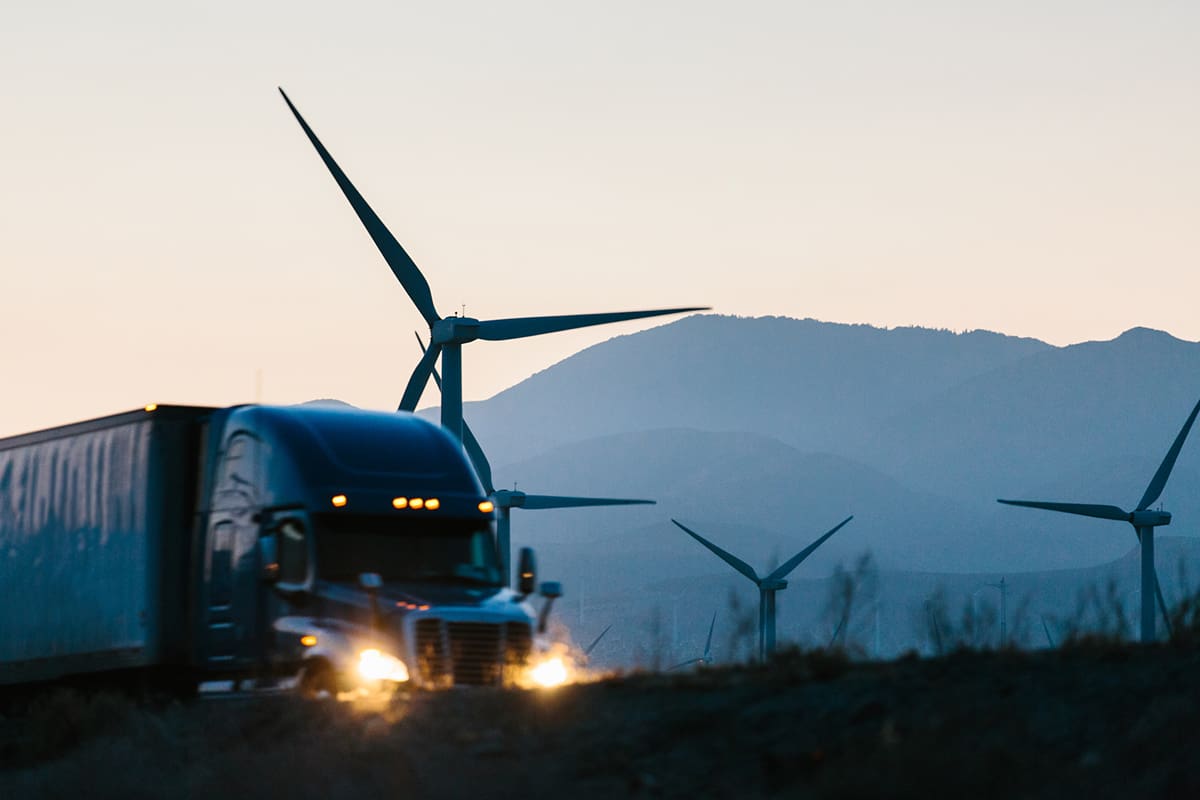
- News Story
Electric-truck purchase incentives present big challenges for small fleets, owner-operators
December 4, 2023
Source: Overdrive
As California and states that adopt its emissions regulations continue to forge ahead toward the elimination — or drastic reduction at the very least — of diesel engines, fleets and certain owner-operators are left to figure out how to meet the requirements.
With overlapping rules that apply to manufacturers and end users each, they can be particularly hard to parse. When it comes to potential investment in a “zero emissions” truck (ZEV) to meet those rules, furthermore, similar dynamics make for a confusing landscape for funding. Long-term, gaining clarity about that confusing landscape could be key, particularly for smaller fleets.
Currently, very few owner-operators and small fleets (fewer than 10 trucks) have any knowledge whatsoever about what’s available. In Overdrive and sister fleet-focused publication CCJ‘s survey this year around electric-drive Class 8 truck interest and adoption, owner-operators and fleets were asked if they’d researched state and federal incentives to help with the costs of ZEVs and charging equipment. When it comes to the trucks themselves, only about 1 in 5 of the smallest fleets reported any research at all into funding. On the private charging-infrastructure-investment front, the number was even smaller.
Though litigation could complicate the landscape, the stakes for that funding could get higher with time. The California Air Resources Board’s Advanced Clean Trucks rule, mostly aimed at equipment manufacturers, requires OEMs to sell ZEV trucks at an increasing percentage of their annual California sales from 2024 to 2035. By 2035, ZEV truck/chassis sales would need to be 55% of Class 2b-3 truck sales, 75% of Class 4-8 straight truck sales, and 40% of truck-tractor sales.
In March, CARB received a waiver from the Environmental Protection Agency, allowing other states to adopt the rule. (With California being the only state in the union allowed to make its own emissions regulations, Section 177 of the Clean Air Act allows for those states to adopt California’s standards instead of federal regs.) With the ACT, nine other states have taken California’s lead: Colorado, Maryland, Massachusetts, New Jersey, New Mexico, New York, Oregon, Vermont and Washington.
The ACT rule also includes reporting requirements for fleets with more than 50 trucks, which CARB said will help identify future strategies to ensure that fleets purchase available zero-emission trucks and place them in service where suitable to meet their needs.
On top of the ACT, CARB finalized in April its Advanced Clean Fleets rule, requiring all new medium- and heavy-duty vehicles sold or registered in the state to be ZEVs by 2036. The ACF requires all trucks in use in the state to be ZEVs by 2042. As reported in previous parts of this series, the ACF rule kicks in first next month for drayage operators, regardless of fleet size, and requires trucks to be registered in CARB’s Truck Regulation Upload, Compliance, and Reporting System (TRUCRS) to conduct port and intermodal activities in California. Legacy diesel trucks operating at ports and railyards must register in the system before the first of January to continue operating.
After Jan. 1, any new trucks registered in the system for dray work must be ZEVs, according to the rule, though legal action is pending against both the ACF and ACT, and the ACF has not received an EPA waiver under the Clean Air Act.
Under the ACF, so-called “High Priority” fleets– with 50 or more trucks or with $50 million or more in annual revenue — will be required to fully transition to ZEVs by 2039 for fleets of work trucks and daycabs, 2042 for sleeper tractors.



